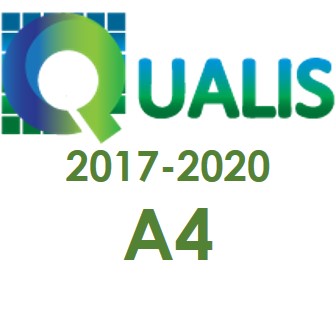Rationalized intentionality: How simple facts become a source of perplexity
DOI:
https://doi.org/10.22481/el.v22.12699Keywords:
intentionality; language acquisition; gestural theory; cooperative theory; Tomasello.Abstract
Michael Tomasello's theory is renowned in the field of usage-based and interaction-based studies of language. In this article, I intend to show that it is based on contradictory assumptions, which compromise the gradualist precepts of an emergentist view of cognition. The concepts of intentional action and understanding (≈ intentionality) that underlie gestural theory are based on cognitive models that pressupose possession of propositional content and skills of logical reasoning. The deictic gestures and cooperative motives, which are central to the primitivism of joint/shared intentionality, work as theoretical devices that rationalize the communication of pre-linguistic children, aiming to preserve human uniqueness vis-à-vis other primates. The rationalization of the concept of intentionality, which can be mapped along a sequence of publications, demonstrates that it addresses problems which has more to do with an idealized conception of intentionality than with empirical facts.
Downloads
References
BARRETT, L. A Better Kind of Continuity. The Southern Journal of Philosophy, v. 53, n. S1, p. 28–49, 1 set. 2015.
_____. Picturing Primates and Looking at Monkeys: Why 21st Century Primatology Needs Wittgenstein. Philosophical Investigations, v. 41, n. 2, p. 161–187, 2018.
BEHNE, T.; CARPENTER, M.; TOMASELLO, M. One-year-olds comprehend the communicative intentions behind gestures in a hiding game. Developmental Science, v. 8, n. 6, p. 492–499, 2005.
BUCKNER, C. Morgan’s Canon, meet Hume’s Dictum: Avoiding anthropofabulation in cross-species comparisons. Biology and Philosophy, v. 28, n. 5, p. 853–871, 30 set. 2013.
FRANCO, J. B. Tomasello em busca da singularidade humana: uma crítica naturalista inspirada pela filosofia de Wittgenstein. Orientadora: Evani de Carvalho Viotti. 2023. 150fl. Tese (Doutorado em Linguística) – Departamento de Lunguística da Universidade de São Paulo, São Paulo, 2023.
HARE, B. Can competitive paradigms increase the validity of experiments on primate social cognition? Animal cognition, v. 4, n. 3–4, p. 269–280, 2001.
HARE, B.; TOMASELLO, M. Chimpanzees are more skilful in competitive than in cooperative cognitive tasks. Animal Behaviour, v. 68, n. 3, p. 571–581, 2004.
LEUDAR, I.; COSTALL, A. On the historical antecedents of the theory of mind paradigm. Against Theory of Mind, p. 19–37, 2009.
PENN, D. C. How folk psychology ruined comparative psychology: And how scrub jays can save it. Animal Thinking: Contemporary Issues in Comparative Cognition, v. 8, p. 253–265, 2011.
RICHARDSON, R. C. Evolutionary psychology as maladapted psychology. Cambridge, MA: MIT Press, 2007.
SATNE, G. A two-step theory of the evolution of human thinking: Joint and (various) collective forms of intentionality. Journal of Social Ontology, v. 2, n. 1, p. 105–116, 2016.
SHARROCK, W.; COULTER, J. ToM: A Critical Commentary. Theory & Psychology, v. 14, n. 5, p. 579–600, 2004.
TOMASELLO, M. The Cultural Origins of Human Cognition. Cambridge: Cambridge University Press, 1999.
_____. The social-pragmatic theory of word learning. Pragmatics. Quarterly Publication of the International Pragmatics Association (IPrA), v. 10, n. 4, p. 401–413, 2000.
_____. Understanding and sharing intentions: The origins of cultural cognition. Behavioral and Brain Sciences, v. 28, n. 5, p. 675–691, 2005.
_____. Origins of Human Communication. Cambridge, London: The MIT Press, 2008.
_____. Why We Cooperate. Boston: MIT Press, 2009.
_____. Two key steps in the evolution of human cooperation: The interdependence Hypothesis. Current Anthropology, v. 53, n. 6, p. 673–692, 2012.
_____. A Natural History of Human Thinking. Cambridge, London: Harvard University Press, 2014.
_____. Becoming human: A theory of ontogeny. London: Harvard University Press, 2019.
TOMASELLO, M.; CALL, J. Primate Cognition. Oxford: Oxford University Press, 1997.
TOMASELLO, M.; CALL, J.; GLUCKMAN, A. Comprehension of Novel Communicative Signs by Apes and Human Children. Child Development, v. 68, n. 6, p. 1067, dez. 1997.
TOMASELLO, M.; CARPENTER, M. Shared intentionality. Developmental Science, v. 10, n. 1, p. 121–125, 2007.
TOMASELLO, M.; RAKOCZY, H. What makes human cognition unique? From individual to shared to collective intentionality. Mind and Language, v. 18, n. 2, p. 121-147, 2003.
WITTGENSTEIN, L. Philosophical Investigations. Oxford: Wiley-Blackwell, 2009 [1979].
ZAHAVI, D.; SATNE, G. Varieties of shared intentionality: Tomasello and classical phenomenology. Em: BELL; CUTTROFELLO; LIVINSTON (Eds.). Beyond the Continental-Analytic Divide. London: Routledge, 2015.
Downloads
Published
How to Cite
Issue
Section
License
Copyright (c) 2024 Language Studies

This work is licensed under a Creative Commons Attribution 4.0 International License.

Estudos da Língua(gem) is licensed under a Creative Commons Attribution 4.0 International License.
Authors who publish in the journal Estudos da Língua (gem) agree with the following terms:
The journal Estudos de Língua(gem) maintains the copyrights of the contributions published. These rights include the publication of the contribution and make its content available for free through the portal.






